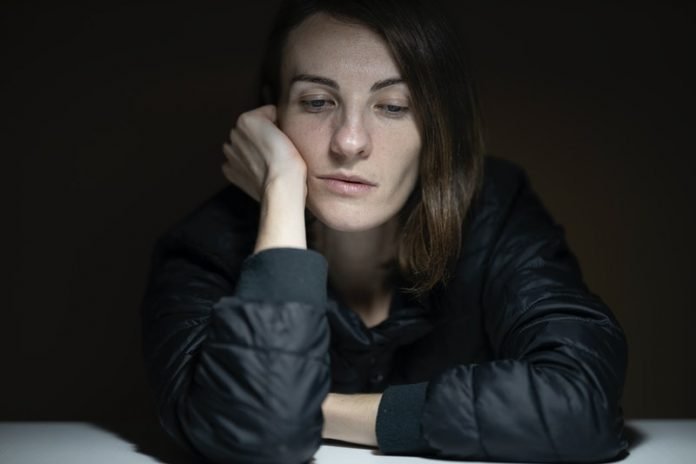
While some welcome the changing leaves of fall and fresh snow of winter, others find themselves having difficulty waking in the morning, experiencing daytime fatigue, eating more carbohydrates, and feeling a general sense of depression this time of year.
There’s a name for this—seasonal affective disorder, or SAD—a type of depression that comes and goes with the seasons.
Onset typically begins in late fall and early winter, when temperatures drop and days are shorter, and can continue through spring.
With the COVID-19 pandemic, some may feel the effects of seasonal depression even more than usual.
“Those suffering should know there are effective treatments for this disorder, and it shouldn’t be brushed off as just the winterblues,” says Michael Terman, Ph.D., professor of clinical psychology at Columbia University.
In the interview below, Terman, who also is president of the Center for Environmental Therapeutics, talks about ways to identify and treat SAD and how to fight seasonal depression in a uniquely challenging winter.
What is seasonal affective disorder?
Seasonal affective disorder is a strong tendency to become depressed during a specific time of the year—most often in late fall, continuing into winter.
There can be other years when the dip is milder than a full depression, or even absent. Summers are most often symptom-free.
What causes it?
Winter SAD is linked to less daylight, which is exacerbated by spending more time indoors. The sensitivity to these changes varies by individual.
Some people react to the first signs of seasonal change around the fall equinox in September, while others’ moods don’t plunge until December.
The most common period for the onset of a SAD episode is late October through November. January and February are the worst months overall, and the symptoms don’t fully subside until early May.
Given the continued time spent indoors through the ongoing pandemic, symptoms experienced during winter may not abate with the arrival of spring next year.
Confinement indoors for long periods, under typical room light levels, essentially creates a mimic of eternal winter, overriding the seasonal transition to longer days and the natural bright light exposure that would otherwise break the winter cycle with a spontaneous return to normal mood, energy, appetite, and sleep.
We have seen this before in people with chronic, nonseasonal depression, who limit their activities, linger in bed, stop working, and don’t get out.
How many people are affected by SAD?
Seasonal affective disorder is estimated to affect 10 million Americans, or 3% of the population. An additional 10% may have mild cases.
The disorder affects women four times more than men and usually begins between the ages of 18 and 30, though children can suffer too.
Some people’s symptoms are severe enough to affect quality of life; 6% require hospitalization. Those diagnosed with SAD experience major depression seasonally for at least two consecutive years.
But there are significant geographic differences, especially in latitude, since winter nights are hours longer in the north than in the south.
Who is most at risk for developing SAD?
Most studies have zeroed in on women of childbearing age, but SAD is definitely not age- or sex-specific. Lower estimates for men may be biased by some men’s reluctance to admit to mood shifts.
In a study I conducted many years ago, published in the Journal of Biological Rhythms, a random sample of New Yorkers rated key symptoms of seasonal change—for example, weight gain, longer sleep, and reduced motivation, productivity, and social interest.
The survey specifically avoided calling attention to the psychiatric connection. There was no difference in SAD-like symptoms between men and women.
What are the symptoms?
Physical symptoms that precede the mood shift include difficulty waking up on schedule, daytime fatigue, a craving for carbohydrates, and weight gain.
Once the depression hits, the symptoms mimic those of nonseasonal depression, including loss of motivation for work or other activities, reduced social contact, and anxiety.
The difference is that the onset of the SAD episode is predictable, usually weeks after the physical symptoms appear, and countermeasures can begin before the mood swing is severe.
In that sense, SAD patients are luckier than their cohorts with nonseasonal depression.
At what point is it necessary to see a doctor?
Most people with SAD have experienced the winter shift for years before identifying the seasonal pattern.
And because they can firmly anticipate feeling better after several months, they may brush it off as a temporary burden, even though they can become quite dysfunctional.
Others have sought treatment with antidepressants, often unnecessarily maintained year-round, because neither they nor their doctors have put a finger on the seasonal timing.
If symptoms are severe, that should prompt consultation with a primary care physician, a psychiatrist, or other mental health professional.
The challenge for patients is recognizing when they should seek help, and if they do, making sure their provider has the expertise to supervise SAD-specific treatment.
Responsibility lies both with the patient and doctor. I urge patients to document their symptoms with a set of free online self-assessment questionnaires from the nonprofit Center for Environmental Therapeutics.
The printout of results provides a solid basis for guiding a consultation with a health care provider.
How is SAD treated?
Light therapy—from a box that emits bright light at the level of natural outdoor light shortly after sunrise—is the primary, best-investigated, and most successful intervention.
It is a home-based treatment, done immediately upon getting out of bed. A problem has been the proliferation of low-priced, miniature light therapy devices on the commercial market, almost all of them untested for safety and efficacy.
Here, too, the Center for Environmental Therapeutics provides guidance on light box design, medication interactions, and an optimal treatment regimen.
There is also a set of less-investigated, but promising, treatment options: Dim-light simulations of sunrise, tied to the patient’s desired wakeup time; seasonally timed administration of antidepressants; and even cognitive behavioral therapy focused on adjustment to winter symptoms.
Negative air ionization is another naturalistic treatment method for SAD patients, first investigated by researchers at Columbia University and NewYork-Presbyterian.
A high-powered electronic device emits a stream of electrons that attach to oxygen molecules in the room circulation, creating imperceptible superoxide (a compound that is a form of oxygen) with antidepressant properties.
In nature, we find high levels of ionized air at the seashore, in a rain forest, and even in the city right after a springtime thunderstorm. Indoor ion level—especially with heated, dry air in winter—is far reduced.
By using a high-density ionizer, depressive symptoms can decrease with short daily sessions.
How does using a light box compare with exposure to sunlight?
The timing differs, because winter sunrise typically occurs later in the morning than when you would wake up for light therapy.
Also, light boxes assiduously eliminate UV rays to protect against skin reactions like redness or puffiness, or long-term risks like skin cancer, since exposure to intense artificial lighting can pose the same risks as sun exposure.
Is taking vitamin D supplements a recommended therapy?
Vitamin D levels decline in winter both for people who experience SAD and those who don’t.
The common cause is reduced outdoor daylight exposure. However, there is no convincing evidence that vitamin D supplements are therapeutic for SAD.
Any tips for people working from home who may not be going outdoors as much this winter?
Light therapy shortly after waking can maintain alertness at work.
Evening light exposure from computer, tablet, smartphone, or video displays can make it difficult to fall asleep, unless the blue emission is blocked, so I recommend limiting screen time at least an hour before bedtime.
How important are good sleeping habits?
A regular sleep-wake pattern should be everyone’s objective, depressed or not. The problem for people with SAD is an increased pressure to sleep longer hours than they do in the spring and summer.
The extra sleep does not provide extra daytime energy but rather is a symptom of depression. Good sleeping habits go out the window, but this is not the patient’s fault. Effective treatment can quickly normalize the sleep pattern.
What’s the most important message you have for those suffering from SAD?
Educate yourselves. Take responsibility for having a discussion about SAD with your doctor or a mental health professional.
Bring along the personalized feedback printouts from the online self-assessments at cet.org to help focus the discussion on effective home treatment.
Don’t succumb to the inclination to suffer seasonal symptoms as a given burden of normal life in the north, intensified by the change in our behaviors caused by COVID.
If you care about depression, please read studies about new way to reduce depression relapse,
and depression drug that can help reduce death risk in COVID-19.
For more information about health, please see recent studies about people that are more likely to get severe COVID-19 after vaccination, and results showing how people with cancer can navigate COVID-19 for the holidays.




